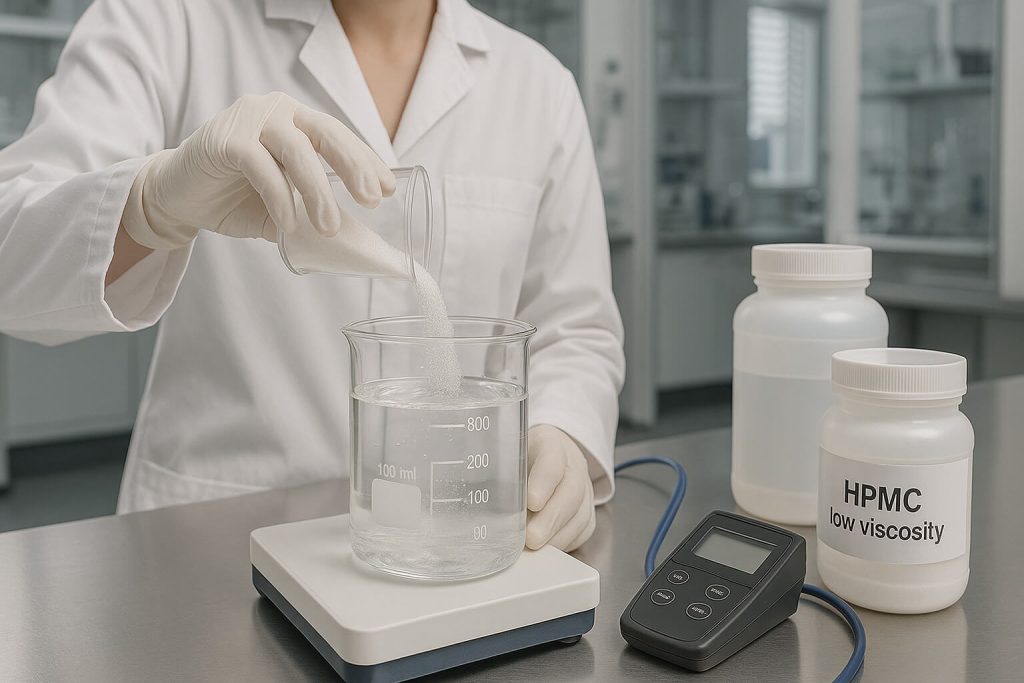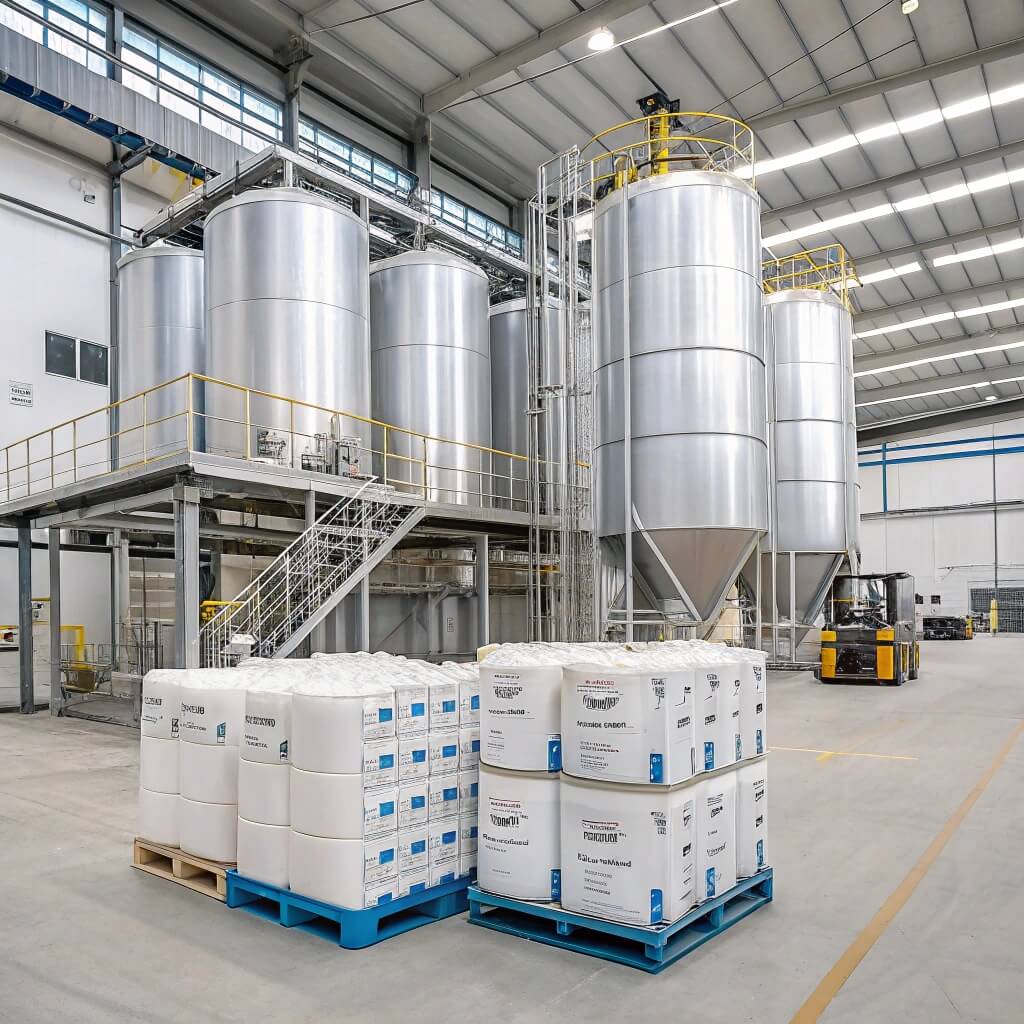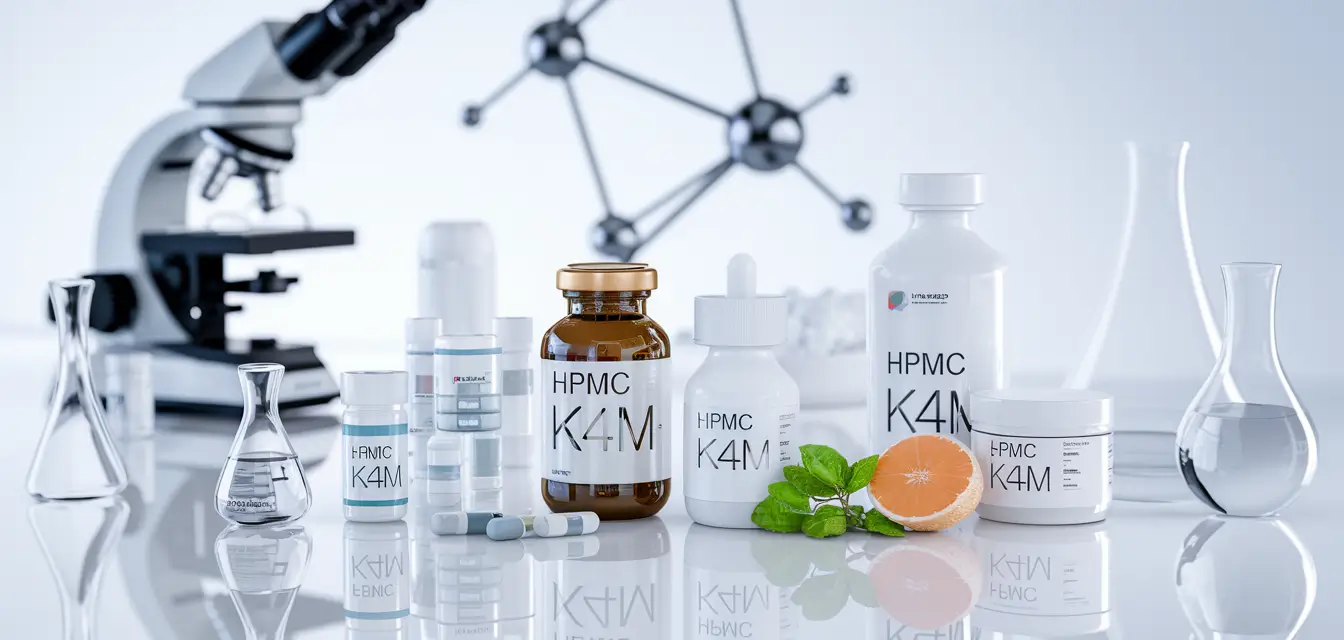Low viscosity Hydroxypropyl Methylcellulose (HPMC) grades represent a specialized subset of this versatile polymer that many formulators and purchasing managers struggle to properly select and utilize. With viscosity ranges typically between 5-100 mPa·s, these grades offer unique handling properties and functional benefits that differ significantly from their medium and high viscosity counterparts. This article provides a comprehensive examination of low viscosity HPMC grades, their defining characteristics, manufacturing processes, and diverse applications across pharmaceuticals, construction, food, and personal care industries. Understanding these specialized grades will help you make more informed purchasing decisions and optimize your formulations for improved performance and cost-efficiency.

1. What Defines Low Viscosity HPMC And How Is It Measured?
Low viscosity Hydroxypropyl Methylcellulose (HPMC) is characterized primarily by its flow properties in solution, with grades typically ranging from 5 to 100 mPa·s when measured at standard conditions. This viscosity range makes these grades particularly suitable for applications requiring good flowability, rapid dissolution, and minimal thickening effects.
Vous pourriez être surpris d'apprendre that the viscosity of HPMC is not an inherent property of the molecule itself, but rather a function of its molecular weight and degree of substitution. Low viscosity grades generally have lower molecular weights, achieved through controlled polymerization or depolymerization processes during manufacturing.
The chemical structure of low viscosity HPMC remains consistent with other HPMC grades, consisting of a cellulose backbone modified with methoxyl and hydroxypropyl groups. However, the chain length is typically shorter, resulting in reduced entanglement in solution and consequently lower viscosity.
| Propriété | Measurement Method | Typical Range for Low Viscosity HPMC |
|---|---|---|
| Viscosité | Rotational viscometer (2% solution at 20°C) | 5-100 mPa·s |
| Teneur en méthoxyle | Chromatographie en phase gazeuse | 19-30% |
| Teneur en hydroxypropyle | Chromatographie en phase gazeuse | 4-12% |
| Molecular weight | Gel permeation chromatography | 10,000-90,000 Daltons |
| Taille des particules | Diffraction laser | 20-150 microns |
Viscosity measurement for HPMC follows standardized protocols, typically using a rotational viscometer to measure a 2% aqueous solution at 20°C. The United States Pharmacopeia (USP) and European Pharmacopoeia (Ph.Eur.) specify these testing conditions to ensure consistency across different manufacturers and batches.
Low viscosity HPMC differs from other cellulose derivatives like low viscosity methylcellulose (MC) or carboxymethylcellulose (CMC) in several key aspects. While all provide some degree of water solubility, HPMC offers a unique balance of hydrophilic and hydrophobic properties due to its dual substitution.
2. What Are The Manufacturing Processes For Low Viscosity HPMC Grades?
The production of low viscosity HPMC involves specialized manufacturing techniques that carefully control molecular weight and substitution patterns to achieve the desired flow properties. Understanding these processes helps formulators appreciate the quality differences between grades and suppliers.
Here’s something critical to understand: the manufacturing process directly impacts not just viscosity, but also dissolution rate, particle size distribution, and purity—all factors that can significantly affect performance in your application.
The primary raw material for all HPMC production is cellulose, typically derived from wood pulp or cotton linters. This natural polymer undergoes a multi-step modification process to introduce the methoxyl and hydroxypropyl groups that give HPMC its unique properties.
| Manufacturing Approach | Process Description | Impact sur les propriétés |
|---|---|---|
| Controlled etherification | Precise reaction conditions during substitution | Consistent substitution pattern, predictable performance |
| Depolymerization | Controlled degradation of higher molecular weight material | Narrower molecular weight distribution, faster dissolution |
| Fractionation | Separation of specific molecular weight ranges | More uniform performance, higher purity |
| Specialized milling | Fine grinding with controlled temperature | Optimized particle size, improved dissolution rate |
Quality control during production is particularly stringent for low viscosity grades, as small variations in molecular weight can have proportionally larger effects on viscosity compared to higher viscosity grades. Key parameters monitored include viscosity, substitution degree, moisture content, particle size distribution, and gel content.
Major manufacturers of low viscosity HPMC include Dow Chemical (METHOCEL™), Shin-Etsu (METOLOSE®), Ashland (BENECEL™), Samsung Fine Chemicals (MECELLOSE™), and several Chinese producers like Hopetop Pharmaceutical and Anhui Sunhere. Each employs proprietary processes that result in subtle differences between their products, even at nominally identical viscosity grades.
3. What Are The Primary Applications Of Low Viscosity HPMC In Pharmaceuticals?
The pharmaceutical industry represents one of the largest markets for low viscosity HPMC, where these grades serve critical functions in various drug delivery systems and manufacturing processes. Their unique properties make them particularly valuable for specific pharmaceutical applications where higher viscosity grades would be problematic.
But here’s what many formulators overlook: low viscosity HPMC grades often provide better content uniformity in solid dosage forms and superior spray characteristics in coating applications compared to their higher viscosity counterparts.
In immediate-release tablet formulations, low viscosity HPMC (typically 3-15 mPa·s) functions primarily as a binder, helping to maintain tablet integrity without significantly impeding disintegration.
| Demande pharmaceutique | HPMC Grade Example | Principaux avantages |
|---|---|---|
| Tablet binding (wet granulation) | HPMC E3 Premium LV | Low water requirement, good compressibility |
| Tablet binding (direct compression) | HPMC E5 LV | Excellent flow properties, minimal lubricant sensitivity |
| Film coating | HPMC E3, E5, E6 | Uniform coating, low viscosity spray solutions |
| Solutions ophtalmiques | HPMC E15LV | Controlled lubrication, rapid dissolution |
| Liquid oral suspensions | HPMC E6LV | Minimal thickening, good suspending properties |
Film coating represents perhaps the most significant pharmaceutical application for low viscosity HPMC. Grades like HPMC E5 and E6 (5-6 mPa·s) provide ideal viscosity for spray application, allowing formulators to prepare coating solutions with higher solid content (10-15%) while maintaining sprayability.
A case study from a generic pharmaceutical manufacturer demonstrated that switching from a 15 mPa·s HPMC to a 6 mPa·s grade in their film coating operation reduced processing time by 35% while improving coating uniformity by 22%, as measured by standard deviation of tablet weight gain.
In liquid pharmaceutical preparations, low viscosity HPMC provides minimal viscosity impact while still offering stabilizing and suspending properties. This makes it particularly valuable in ophthalmic solutions, where grades like HPMC E15LV (15 mPa·s) provide sufficient lubrication and ocular contact time without causing blurred vision or excessive thickness.
4. How Is Low Viscosity HPMC Used In Construction Products?
The construction industry utilizes low viscosity HPMC grades in specialized applications where rapid dissolution, good workability, and minimal water retention are required. While medium and high viscosity grades dominate many construction applications, low viscosity variants fill important niches in the industry.
What many contractors don’t realize is that low viscosity HPMC can significantly improve the application properties of spray-applied materials without the excessive stickiness or water retention that higher viscosity grades sometimes cause.
In tile adhesives and grouts, low viscosity HPMC (typically 50-100 mPa·s) provides moderate water retention and improved workability without significantly extending setting time.
| Demande de permis de construire | Typical HPMC Grade | Functional Benefits |
|---|---|---|
| Spray-applied mortars | HPMC 60SH-50 | Rapid dissolution, minimal nozzle clogging |
| Self-leveling compounds | HPMC 60SH-50/60SH-100 | Improved flow, reduced air entrainment |
| Fast-setting tile adhesives | HPMC 70SH-100 | Moderate water retention, faster setting |
| Gypsum-based joint compounds | HPMC 40SH-50 | Good workability, minimal drying time impact |
Spray applications represent a particularly important niche for low viscosity HPMC in construction. Grades with viscosities between 50-75 mPa·s provide sufficient binding and water retention to prevent material segregation during pumping and spraying, while their low viscosity ensures rapid dissolution and minimal pump pressure requirements.
A technical case study from a major European construction company found that replacing a 4,000 mPa·s HPMC with a 75 mPa·s grade in their spray-applied cement coating reduced equipment wear by 40% and decreased application time by 25%, while still providing adequate adhesion to vertical surfaces.
In self-leveling compounds, low viscosity HPMC grades help control rheology without significantly impacting flow properties. They provide sufficient water retention to prevent rapid drying while allowing entrapped air to escape easily, resulting in smoother surfaces with fewer pinholes or imperfections.
5. What Food And Personal Care Applications Benefit From Low Viscosity HPMC?
The food and personal care industries leverage low viscosity HPMC for its unique functional properties, particularly in applications where minimal thickening but good film-forming, emulsifying, or stabilizing properties are desired.
The surprising fact is that low viscosity HPMC often outperforms other cellulose derivatives in creating thin, uniform films and coatings due to its balanced hydrophilic-hydrophobic character.
In food applications, low viscosity HPMC serves multiple functions depending on the specific product category:
| Application alimentaire | HPMC Grade Example | Functional Benefits |
|---|---|---|
| Glazes and coatings | HPMC E5 | Uniform film formation, oil barrier properties |
| Fried food coatings | HPMC E15LV | Reduced oil absorption, improved crispness |
| Sauces and dressings | HPMC F50LV | Emulsion stability without high viscosity |
| Bakery improvers | HPMC E6LV | Dough stability, minimal texture impact |
| Plant-based meat alternatives | HPMC K100LV | Binding properties with minimal gumminess |
Food coatings and glazes represent a particularly valuable application area for low viscosity HPMC. Grades with viscosities between 5-15 mPa·s create thin, uniform films that provide moisture barriers, improve appearance, and can carry flavors or colors.
In fried food applications, low viscosity HPMC creates a thin barrier film that reduces oil absorption during frying. A study with donut coatings showed that an HPMC E15LV coating reduced oil uptake by 30% compared to uncoated products, while maintaining desirable texture and appearance.
For personal care products, low viscosity HPMC provides functional benefits in various formulations, including shampoos, toothpastes, cosmetic emulsions, and sunscreen sprays. Its non-ionic nature makes it compatible with the wide range of ingredients found in modern personal care formulations.
6. How Do Formulators Select The Appropriate Low Viscosity HPMC Grade?
Selecting the optimal low viscosity HPMC grade for a specific application requires careful consideration of multiple factors beyond just the nominal viscosity value. This systematic evaluation process helps ensure that the selected grade will provide the desired performance in the final product.
The reality that many purchasers miss is that two HPMC grades with identical labeled viscosities can perform quite differently in application due to variations in substitution pattern, particle size, and manufacturing process.
Key parameters to consider during the selection process include:
| Selection Parameter | Evaluation Considerations | Impact sur les performances |
|---|---|---|
| Exact viscosity requirement | Target viscosity range for the application | Affects processing, application properties |
| Teneur en méthoxyle | Hydrophobic-hydrophilic balance needed | Influences water retention, organic solubility |
| Teneur en hydroxypropyle | Surface activity requirements | Affects emulsification, film properties |
| Taille des particules | Dissolution speed needs | Determines hydration rate, ease of incorporation |
| Purity requirements | Regulatory or application constraints | Critical for pharmaceutical, food applications |
Application-specific considerations vary significantly by industry. Pharmaceutical formulators typically prioritize consistency, purity, and regulatory documentation. Construction product developers focus on dissolution rate, water retention, and cost-effectiveness. Food and personal care manufacturers often emphasize sensory properties, stability in complex formulations, and label-friendly status.
A pharmaceutical formulator working on a film-coated tablet conducted compatibility testing with three nominally similar 5 mPa·s HPMC grades from different suppliers. Despite identical labeled viscosities, one grade produced significantly better coating uniformity due to its narrower molecular weight distribution and optimized particle size for the spray application process.
7. What Are The Handling, Storage, And Processing Considerations For Low Viscosity HPMC?
Proper handling, storage, and processing of low viscosity HPMC are essential for achieving optimal performance in the final application. These grades present some unique challenges and opportunities compared to their higher viscosity counterparts.
What many processors don’t anticipate is that low viscosity HPMC grades often dissolve more rapidly but can paradoxically be more prone to forming undispersed “fish eyes” if incorporation techniques aren’t optimized.
Dissolution techniques for low viscosity HPMC must be carefully controlled to achieve complete hydration without agglomeration. The most effective method typically involves dispersing the powder in cold water (below 20°C) under high shear mixing to wet all particles before heating to complete dissolution.
| Processing Consideration | Recommended Approach | Erreurs courantes à éviter |
|---|---|---|
| Dissolution method | Cold dispersion followed by heating | Adding directly to hot water (causes lumping) |
| Mixing equipment | High shear mixers for initial dispersion | Insufficient shear leading to poor dispersion |
| Temperature control | Maintain below 20°C during dispersion | Temperature fluctuations during processing |
| Addition rate | Slow, controlled addition to the vortex | Dumping powder too quickly into solution |
Temperature effects on low viscosity HPMC performance can be significant. Most grades exhibit inverse solubility, becoming less soluble as temperature increases. At a specific temperature (thermal gelation point), HPMC solutions transform from liquid to gel state.
A food manufacturer experienced batch-to-batch inconsistency in their sauce production until they discovered that summer temperature variations in their process water were affecting the dissolution of their HPMC E15LV. Implementing temperature controls resolved the issue and improved product consistency.
Equipment requirements for processing low viscosity HPMC are generally less demanding than for higher viscosity grades. Lower solution viscosities reduce pump pressure requirements and allow for higher solid content in spray applications.
Conclusion
Low viscosity HPMC grades offer unique functional benefits across pharmaceuticals, construction, food, and personal care applications. Their distinctive combination of rapid dissolution, good flow properties, and minimal thickening effects makes them invaluable for specific applications where higher viscosity grades would be problematic or inefficient.
By understanding the defining characteristics, manufacturing processes, and application-specific considerations discussed in this article, formulators and purchasing managers can make more informed decisions when selecting and working with these specialized materials. The key to success lies in matching the specific grade properties—viscosity, substitution type, particle size, and purity—to the requirements of your particular application.
For optimal results, work closely with HPMC suppliers who offer technical support and application expertise. Their guidance can help navigate the complexities of grade selection and processing optimization, ultimately leading to improved product performance and manufacturing efficiency.
Rubrique FAQ
Q1: How do low viscosity HPMC grades differ from medium and high viscosity grades?
Low viscosity HPMC grades (5-100 mPa·s) differ from medium (100-4,000 mPa·s) and high viscosity grades (>4,000 mPa·s) primarily in molecular weight and chain length, resulting in different functional properties. Low viscosity grades dissolve more rapidly, create solutions with better flow properties, and provide minimal thickening effects. They typically require higher usage levels to achieve certain functional properties like water retention or binding strength. While all HPMC grades share the same basic chemical structure, low viscosity grades often exhibit less pronounced thermal gelation and different film formation characteristics.
Q2: Can low viscosity HPMC be used in sustained-release pharmaceutical formulations?
While high viscosity HPMC grades are typically preferred for sustained-release matrix systems, low viscosity HPMC can play supporting roles in these formulations. They can function as granulation binders or film coating components in multi-layered sustained-release systems. Some formulators use combinations of low and high viscosity grades to achieve specific release profiles or manufacturing benefits. However, when used alone, low viscosity HPMC generally cannot create the robust gel layer needed to control drug diffusion over extended periods.
Q3: What are the environmental and safety considerations when working with low viscosity HPMC?
Low viscosity HPMC is generally considered environmentally friendly and safe to handle. It’s biodegradable, derived from renewable resources (wood pulp or cotton), and has low toxicity. However, like any fine powder, it can create dust during handling, potentially causing respiratory irritation or creating explosion hazards if airborne concentrations are high. Proper dust control measures and personal protective equipment are recommended during handling. From a regulatory perspective, HPMC has favorable environmental profiles with no significant ecological concerns.
Q4: How does particle size affect the performance of low viscosity HPMC grades?
Particle size significantly impacts the dissolution rate and dispersion quality of low viscosity HPMC. Finer particles (20-50 microns) dissolve more rapidly but are more prone to agglomeration (“fish eyes”) if not properly dispersed. Coarser particles (100-150 microns) disperse more easily but take longer to fully dissolve. Some manufacturers offer specially engineered particle size distributions that optimize both dispersion and dissolution characteristics. For spray applications, finer particles are generally preferred for faster dissolution, while some construction applications benefit from coarser grades.
Q5: What recent innovations have improved low viscosity HPMC performance?
Recent innovations in low viscosity HPMC include surface-treated grades with improved dispersibility, dual-substituted variants with enhanced functionality, and grades with optimized particle morphology for specific applications. Some manufacturers have developed “instantly dissolving” grades that incorporate special processing techniques to eliminate the cold water dispersion step. Sustainable production methods using reduced solvent systems and bio-based process aids represent another innovation area. Application-specific developments include grades with improved compatibility in high-electrolyte environments for pharmaceutical applications.




